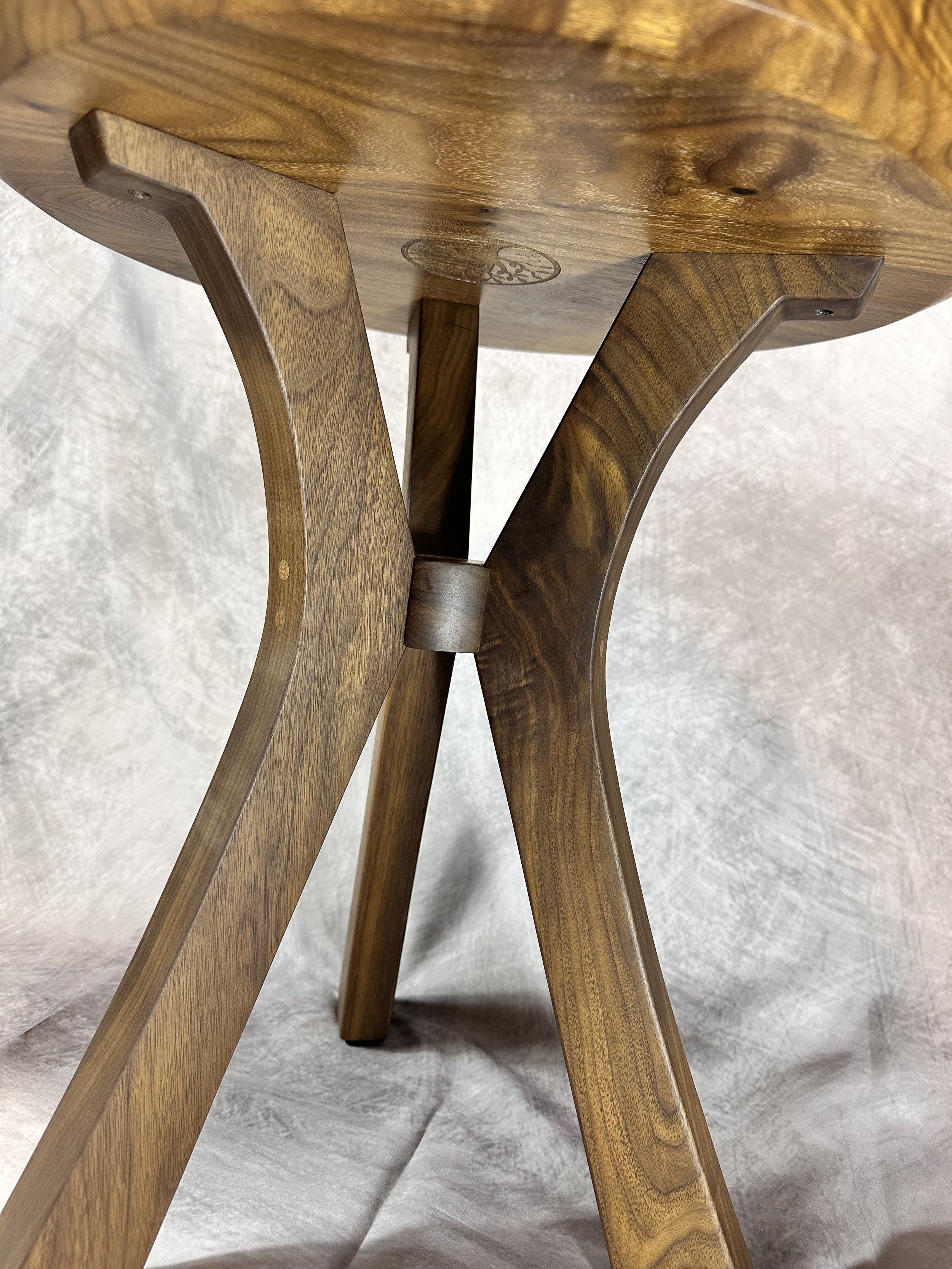Walnut: The Crown Jewel of Hardwoods
Elegant, timeless, and undeniably luxurious—walnut is the hardwood of choice for those who demand both beauty and performance. Its deep, chocolate tones and intricate grain patterns make it a standout in any design, while its durability and workability have kept it at the forefront of fine woodworking for centuries. Recently, walnut has surged in popularity, becoming a staple in high-end furniture and modern interiors. Whether featured in a statement dining table or subtle accents, walnut is a wood that elevates everything it touches.
Why Walnut?
Walnut isn’t just another hardwood—it’s a statement wood known for its elegance, durability, and versatility. Here’s what makes it stand out:
• Rich Color & Luxurious Grain – Deep chocolate brown with hints of purple and gold, walnut’s grain is straight but often features beautiful waves and figuring.
• Strength & Stability – While not the hardest wood, walnut has excellent dimensional stability, making it a great choice for furniture that holds up over time.
• Workability – Walnut machines beautifully, carves easily, and takes finishes exceptionally well, making it a favorite among woodworkers.
• Aging Gracefully – Unlike many woods that darken with age, walnut actually lightens over time, developing a warm, golden glow.
A Brief History of Walnut in Design
Walnut has been a staple in fine furniture and woodworking for centuries, known for its use in both classic and contemporary designs.
18th & 19th Century European Furniture – During the Baroque and Rococo periods, walnut was used in intricately carved furniture due to its smooth grain and ability to hold detail.
Mid-Century Modern Walnut Boom – Designers like Eames, Wegner, and George Nakashima made walnut famous in sleek, minimalist furniture that remains in demand today.
Modern Luxury Interiors – Today, walnut is a top choice for high-end cabinetry, statement dining tables, and architectural accents in luxury homes.
How It’s Cut and Why It Matters
Unlike white oak, which is commonly available in flat-sawn, quarter-sawn, and rift-sawn cuts, walnut is almost exclusively flat-sawn due to how the trees grow. However, the way walnut is cut and selected plays a huge role in grain consistency and color matching for furniture and projects.
Flat-Sawn Walnut – The standard and most widely available cut, showcasing bold, flowing grain patterns with rich color variations. This is what you’ll find in nearly all walnut furniture and lumber.
Hand-Selected Straight Grain – Since quarter-sawn walnut is rare, most woodworkers looking for a clean, linear grain will select straight-grain sections from flat-sawn boards rather than seeking out true quarter-sawn or rift-sawn walnut.
Color Matching Challenges – Walnut can range from deep chocolate brown to reddish, golden, and even purple hues. Because of this natural variation, grain matching is more important than the actual cut when trying to achieve a consistent look in large furniture pieces.
Pro Tip: If you want a more uniform color in a large tabletop or panel, it’s best to buy all your walnut from the same flitch (log) or carefully select boards with similar undertones.
Why I Love Working with Walnut
There’s nothing more exciting to a dorky woodworker than watching a piece of walnut come to life when the finish hits. You spend hours milling, sanding, and perfecting a piece, but the real magic happens when that first coat of oil goes on. The deep chocolate tones, the swirling grain, and even those unexpected streaks of purple and gold explode with richness—it never gets old.
Aside from the pure joy of working with it, here’s why walnut is one of my absolute favorites:
• It machines beautifully – Cuts cleanly with minimal tear-out, making it a dream to work with.
• It finishes like nothing else – Rubio Monocoat, Osmo, or even just a hand-rubbed oil finish brings out depth and color that no stain could ever replicate.
• It’s instantly high-end – Walnut just has that look. It doesn’t need fancy designs or over-the-top detailing—it’s timeless all on its own.
Whether it’s a massive dining table or a small cutting board, walnut has a way of making every project feel just a little more special.
And, according to YouTube… are you really even a woodworker if you don’t make everything out of walnut?
This custom engraved tray shows how the grain of walnut can be beautifully complex.
Final Thoughts
Walnut is the definition of understated luxury. Whether in furniture, decor, or fine woodworking projects, it brings a level of elegance and craftsmanship that few woods can match. Its rich tones, smooth workability, and historical significance make it a wood that will never go out of style.
Want to Work with Walnut?
Check out the finishes and tools I use to bring out the best in walnut: Our Favorites
This is a walnut end tablet that we built as a commissioned piece recently.


